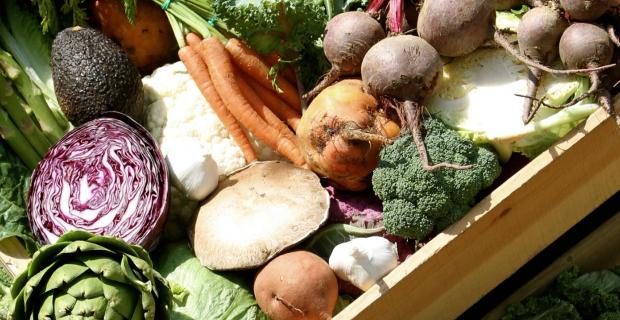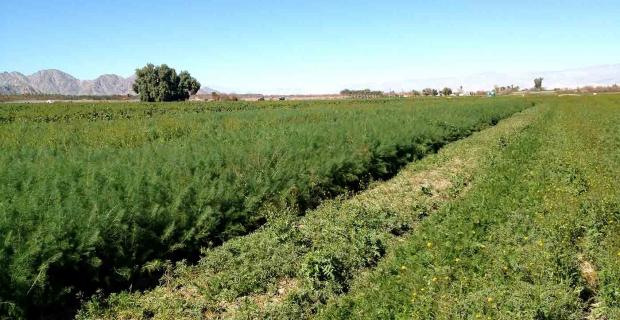Farming for the Future

The snow was so deep that our big dogs were in over their eyeballs.
They couldn't even move through it, and these beasts will brave anything for their beloved walk. They had to follow in the trench-like tracks my wife and I forged, using every ounce of strength just to push a few breathless feet at a time. More weird weather. Climate change kicking in. Expect the unexpected. Expect extremes.
Fortunately, the weather service had predicted the three-plus feet of white stuff blanketing Santa Fe and northern New Mexico. We live in the mountains outside Santa Fe, and had stocked the fridge and pantry for days ahead. Fortunately we didn't lose electricity, unlike many others around town. Give thanks.
Along with our fellow snowbound New Mexicans, we soon learned that northern New Mexico has all of three days' worth of food on store shelves. The only ones able to move food around successfully were Wal-Mart and, to a lesser extent, Whole Foods. I had felt uncomfortably vulnerable visiting Hawai'i, knowing that the islands had only three days of food and water on hand. But New Mexico? It's likely a similar situation where you live.
Bioneers launched a new project in 2007 called Dreaming New Mexico. The idea is for New Mexicans to collectively dream the place in which we want to live. As Black Elk said, "Without a vision, the people will perish." We're so often caught up in the daily struggles of stopping all the bad stuff from happening that we don't step back to ask ourselves what we really want. What are we working for? What is our dream?
In the course of our research, we learned that New Mexico is number one in the country — nice to be number one in something, right? Except in this case it's food insecurity. We then discovered that the federal definition of food insecurity essentially boils down to poverty, or proximity to a grocery store. As Bugs Bunny used to say, "Ain't it amazin'?!"
No mention of climate change and its effects on an inconceivably brittle centralized agro-industrial infrastructure. No mention of rampant topsoil loss, or water shortages, already severe in the Southwest and elsewhere. No mention of lands and waters poisoned by agricultural chemicals. No mention of the vulnerability posed by impoverished crop biodiversity, or threats from disease vectors. No mention of high oil prices and their escalating effect on food costs in a state where 300,000 people in a population of only two million already go hungry every year.
I'd call it policy insecurity, or more accurately a policy of deep insecurity. We have a long row to hoe to begin to build true food security. "Going local" is no longer going to be patted on the head as a nostalgic aesthetic flourish or a quaint experiment. Just contemplate the fact that global warming's impact on California's national breadbasket of the Central Valley could easily produce salt-water infiltration of the water table. Far greater food self-reliance is likely to become a matter of survival and resiliency in the face of a collapsing environment and infrastructure.
The only constant in nature is change, and we're in for big turbulence. Our ability to adapt will be the make-it-or-break-it factor. Evolution's path is littered with extinctions of all those who didn't adapt. In nature the greatest source of resiliency in the face of change is diversity. In other words, hedge your bets. Employ multiple strategies. Rely on diverse sources of subsistence. Create redundancies. Have a backup. Plan B is just the beginning.
After the blizzard in New Mexico, our little community's rural roads were cleared quickly, whereas much of Santa Fe remained buried and immobilized for as long as a week. Why? Since the county doesn't service our little mountain community, we created a neighborhood-based snowplow operation.
In other words, we got by collectively because we didn't rely exclusively on the system. Everyone checked around with neighbors to make sure folks were covered. Our true social security is woven in community, which is also what we hunger for as the highly social animals we are. Restoring community is where the dream also lives.
If we're to successfully navigate the radical changes ahead, we're really looking at nothing less than the redesign of our civilization, from the technological to the cultural. On the functional plane, that's going to require a lot of new infrastructure, which we badly need anyway. The American Society of Civil Engineers gives our current infrastructure a grade of "D"; we can expect it to be coming apart on a regular basis. This new design we'll require equally invites us to cultivate the social capital in our communities. Successful models of human resilience consistently arise in communities with a strong social fabric, including working relationships over time.
One thing we know we'll need is a lot more farmers and food producers. Our farmer population has not only shrunk precipitously, it has also grayed. The seeds of future farmers are our young people. They need education rooted in a strong connection to land, place, and food. They need a support system to succeed for the long haul. Call it farming the future.
School programs, starting at an early age, that focus on gardening, cooking, and the ecology of food are essential ingredients for farming the future. Some of the greatest signs of hope are embodied in the kinds of exemplary work and leadership shown by the Center for Ecoliteracy and the Chez Panisse Foundation, modeling practices that have spread exponentially across the nation over the past ten years. These programs also cultivate the connection to community and place that we're going to need in order to slip through this evolutionary keyhole of history.
Yet with world population at six billion and counting, we're not going to feed the world exclusively from family farms. Leading-edge, high-production models are also crucial, such as John Todd's elegant biomimetic solar greenhouses that ecologically grow large volumes of fresh fish, vegetables, and mushrooms. Such facilities are well fitted to localization and regionalization, scaling from neighborhood-based production to export markets. They can further serve as eye-opening experiential educational tools that demonstrate how to adapt natural principles to serve human ends. How many young inventors are going to light up at the invitation for innovation to realize the dream of a truly sufficient, ecological, and just food system? How can we support them to succeed?
We're going to need big new crops of farmers and a wild diversity of approaches. We're going to learn again how to be intimately specific to our place. It's survival of the fittest in the way Darwin meant it: elegantly fitted to time, place, and food supply — able to adapt to changing local conditions and culture.
It's going to feel at times like pushing through three feet of snow, and it's going to be a long and winding trek across generations. We're already making some of the paths others can walk toward their dreams. Other dreams will blaze brilliant new trails. The dreams are already within us. One day we might just awaken to find ourselves living in our wildest dreams.
May it be so.
©2007 Kenny Ausubel




